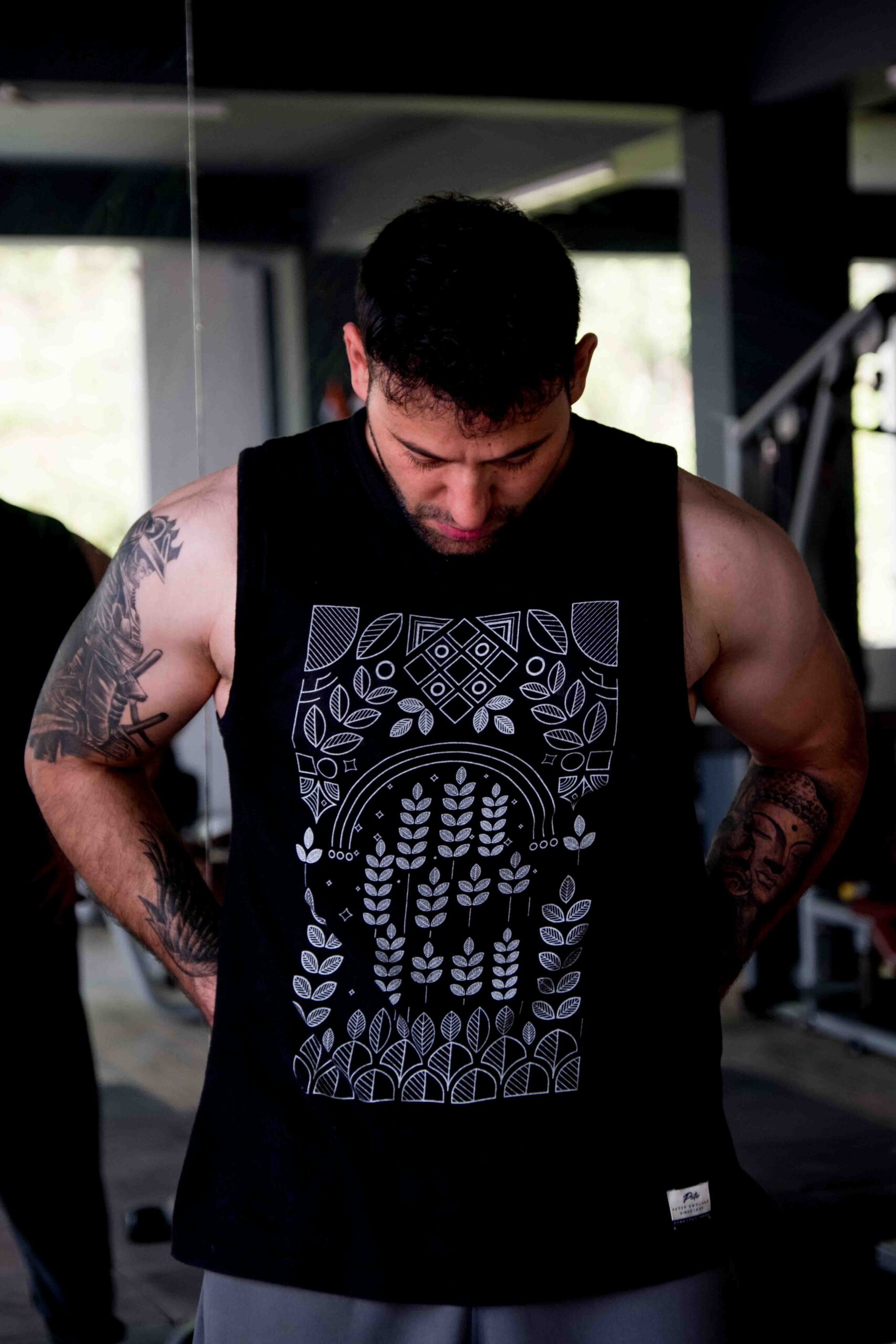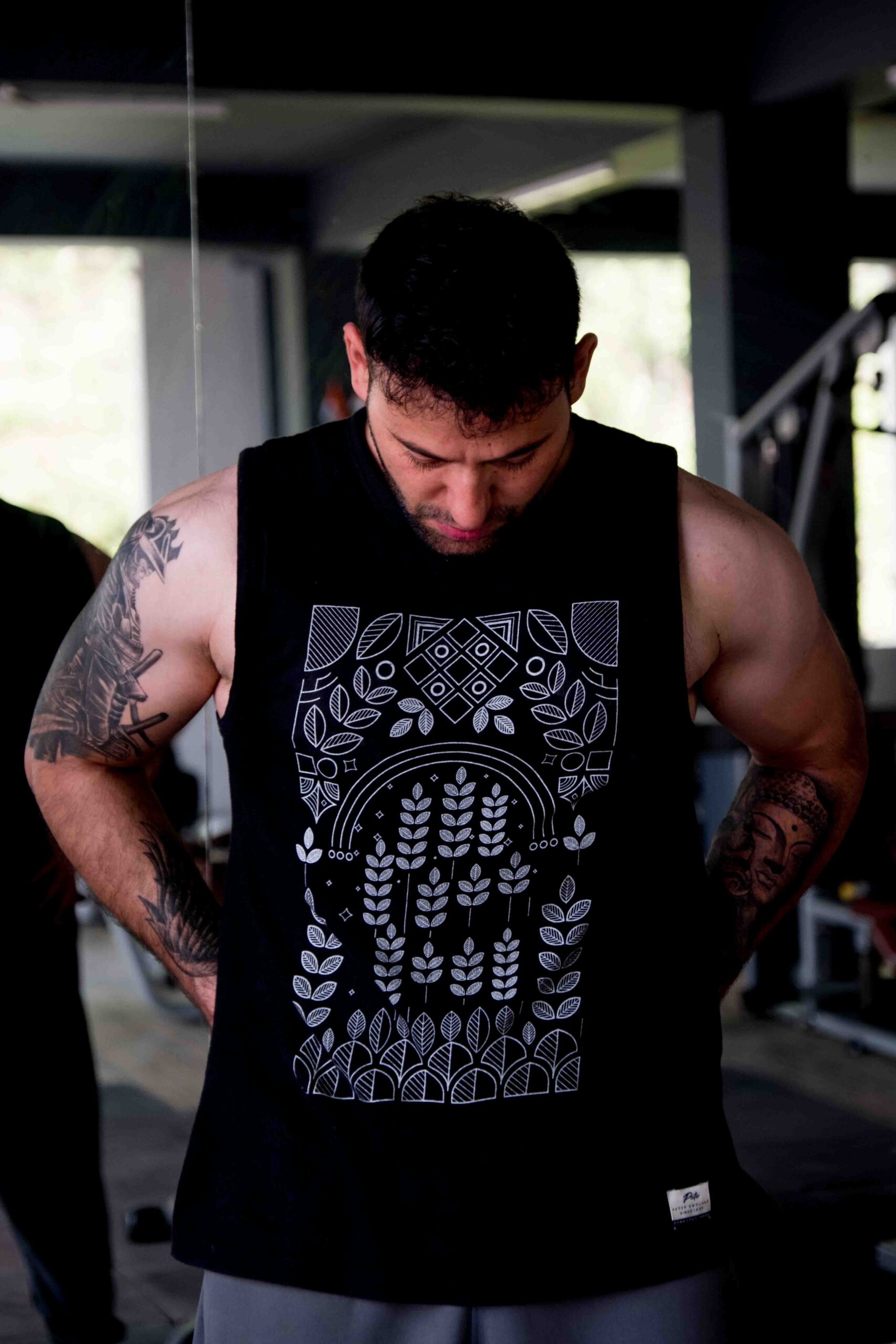So you’re looking to sculpt your biceps and turn those lean limbs into impressive muscles? This article will provide you with a comprehensive and easy-to-follow guide on building bigger biceps, solely through arm workouts. By highlighting the key exercises, the appropriate technique and the optimal frequency of training sessions, you’ll find yourself growing stronger and developing well-defined biceps before you know it! Embark on this muscle-building journey and look forward to the results you’ve always dreamed of!
Understanding Biceps Anatomy
In your journey to build bigger biceps, it’s crucial to understand the anatomy of this muscle group. It’s more complex than you might think!
Identifying the different parts of the biceps
Your biceps, formally known as “biceps brachii,” isn’t just one muscle – it’s made up of two parts. The “long head” runs along the outside of your arm and creates that defined bump when you flex. The “short head” lies on the inside, contributing to overall arm thickness. Both parts branch off into smaller muscle fibers, promising rich rewards if you work them right.
Understanding the function of the biceps
The primary function of your biceps isn’t just to look great in a t-shirt, but to allow rotation of the forearm and to flex the elbow. Whenever you lift, pull, or twist something, thank your biceps. Appreciating the daily workings of your muscles can promote a fresh dedication to your workout routine.
Recognizing the importance of working the entire bicep
Working all parts of the biceps evenly contributes to a balanced, complete strength workout. Overusing the long head can lead to rounded shoulders, while ignoring the short head can hinder certain movements. In your quest for bigger biceps, don’t forget to care for the entirety of the muscle.
Types of Arm Workouts
Your next step is to explore the vast world of arm workouts and strive to incorporate varied techniques in your routine.
Defining different types of arm workouts
Arm workouts can be broadly classified into bodyweight exercises like push-ups and chin-ups, resistance exercises such as dumbbell curls, and machine-based workouts. Each type of workout challenges your biceps in a different way.
Detailing the importance of diversity in your workout routine
Biceps, like all muscles, adapt to repeated stimulus. To keep them growing and avoid waylaying your progress, make sure your workout routine features plenty of diversity. Muscle confusion techniques can also contribute to continuous progression and growth.
Learning about compound and isolation exercises
Compound exercises involve multiple joints and muscle groups, making them great for overall strength and conditioning. Isolation exercises, on the other hand, target specific muscles, providing the control you need to achieve your bicep goals.
Effective Bicep Workouts
Let’s delve deeper into some specific exercises that have proven effective for bicep growth.
Understanding barbell curls
Barbell curls are a classic bicep builder. By keeping your elbows stationary and using a full range of motion, you’ll stimulate both the long and short head of your biceps. Remember to squeeze the muscle at the top of each rep!
Explaining hammer curls
Hammer curls represent a slight twist to the traditional curl. By keeping your palms facing each other, you’ll fire up the brachialis, a muscle that lies beneath the biceps and can increase overall arm size.
The mechanics of concentration curls
Concentration curls allow for maximum muscle isolation. By performing these seated with your arm against your inner thigh, you put all the focus on your biceps. They are ideally used at the end of your workout to give your biceps that final, growth-stimulating push.
The benefits of seated alternating dumbbell curls
Seated alternating dumbbell curls bring together the benefits of isolation and controlled movement. By alternating the two arms, you create a sustained tension throughout the set, offering a serious bicep challenge.
Proper Form and Technique
Nailing the perfect form and technique can make a huge difference in your workout’s effectiveness. Let’s look at ways to improve your efficiency and safety while exercising.
Exploring the right way to do these exercises
When it comes to bicep exercises, keep elbows by your sides, use a full range of motion, and make sure you don’t swing the weight. It’s better to use a lighter weight and execute the move correctly than to lift heavy with improper form.
Avoiding common mistakes and injuries
Common training pitfalls include using too much weight, neglecting the negative part of the rep, and speedy reps without controlling the movement. Steer clear of these if you want to keep your muscles safe and your gains steady.
The importance of control and full-range motion in bicep workouts
Bicep workouts need to focus on controlled, precise movements to achieve maximum muscle contraction and relaxation. This facilitates optimal muscle fiber recruitment, which spurs growth and reduces injury risk.
Implementing Workout Progression
Progression is key to enlarge your biceps consistently. This is where the principle of progressive overload comes into play.
Understanding progressive overload principle
Progressive overload is the gradual increase of stress placed on your body during workouts. Whether you add weight, increase your reps, or up your workout frequency, your muscles will continue to grow and adapt to the added burden, leading to an increase in size and strength.
Adjusting your weights and reps for visible progress
If building size is your primary goal, aim for a weights-and-reps scheme that suits hypertrophy (muscle growth). Typically, you might perform 8-12 reps with a weight that challenges you by the end of the set.
Recognizing the signs of plateau and adapting your regimen
When your progress stalls, it’s likely you’ve hit a plateau. This is a clear sign it’s time to adjust – either by adding weight, varying your workouts, or shaking up your set and rep scheme. Remember, a plateau is not a stop sign, but an opportunity to switch things up!
Role of Nutrition in Bicep Growth
Fueling your body right is just as important as exercising your muscles. Let’s look at what should be on your plate to build bigger biceps.
Necessary Dietary changes for muscle mass gains
To gain muscle mass, you need to eat in a caloric surplus, meaning consuming more calories than your body burns. Quality protein, carbohydrates, and healthy fats form the essential building blocks for muscle growth.
Importance of protein for muscle building
Protein is especially key because it provides the amino acids that rebuild your muscles after a workout. To fuel your growth, aim for a protein-rich meal within 30 minutes after your workout.
Recommended supplements for greater bicep growth
While your basic nutrients should come from a diverse, balanced diet, supplements like creatine and protein powder can help you reach your muscle-building goals, particularly if you’re having trouble getting enough calories or protein from food alone.

The Importance of Rest and Recovery
Rest and recovery are often overlooked aspects of fitness that can significantly impact your bicep building adventure.
Understanding the role of rest periods between workouts
Your muscles grow not during workouts, but in the rest period afterward. Allow at least 48 hours between bicep-intensive workouts so your muscles have time to repair and grow.
Exploring the science behind muscle recovery and growth
When you work out, small tears form in your muscles. During recovery, your body repairs these tears and builds additional muscle tissue, leading to growth. Without sufficient recovery time, your muscles can’t complete this growth cycle, and your hard-earned progress will stall.
Ways to optimize your recovery periods
Getting ample sleep, hydrating, and consuming protein-dense food right after your workout can speed up your recovery. Additionally, rest days should be active – try light cardio or stretching to advance muscle cleanup and encourage growth.
Creating a Customized Workout Routine
Your bicep workout needs to suit your individual characteristics, be it workout experience, availability, or personal goals.
Planning a weekly arm workout schedule
As a rule of thumb, working on your arms 2-3 times a week should give them enough stimulus without overtaxing them. Importantly, splitting these sessions with other muscle groups allows for your body’s systemic recovery and growth.
Balancing bicep workouts with other muscle groups
Prioritizing all muscle groups not only prevents imbalances that might lead to injuries but also improves your overall strong physique. Try complementing bicep workouts with tricep and shoulder training for well-rounded arm muscle development.
Setting realistic goals and expectations based on individual fitness level
Setting goals is crucial for tracking your growth, but always ensure they’re aligned with your current fitness level. If you’re at a beginner level, strive for small, incremental increases. If you’re more advanced, opt for heftier challenges.

Incorporating Other Exercises for Overall Arm Development
To get a fully developed arm, you can’t just concentrate on biceps; you need to target your triceps and forearms as well.
Exploring workouts targeting triceps and forearm muscles
Your triceps occupy more of your arm mass, so don’t neglect them. Moves like pushdowns, skull crushers, and kickbacks can target this area. For forearms, consider wrist curls or farmer walks.
Creating workout balance for aesthetics and functionality
Balancing your arm workouts promises aesthetic symmetry and functional fitness. Your goal should be a well-rounded arm muscle program that promotes size, strength, and endurance.
Understanding how larger arm muscles support bicep growth
The bigger your arm muscles, the more support your biceps have, which means that feeding all of these muscles will directly contribute to your biceps’ growth.
Monitoring Your Progress
Don’t underestimate the power of monitoring your progress! It can powerfully motivate you and help you identify any necessary adjustments to your routine.
Keeping track of your workout statistics
Whether it’s a training diary or a smartphone app, tracking your workout details – exercises, sets, reps, weights – will help you see progress and push towards your goals.
Finding motivation in physical transformation
Take progress pictures or measure your arms every few weeks. Changes might come gradually, but visual signs of bicep growth will undoubtedly stoke your motivation fire.
Adjusting workout routine based on performance and results
As you monitor your progress, you’ll identify areas where you excel and others where improvements are needed. Use this data to adjust and optimize your workout regimen, keeping your bicep growth consistent and rewarding.
By following these comprehensive steps, you hold the roadmap to building bigger biceps through arm workouts. While the journey demands commitment and consistency, the satisfaction of seeing your muscular growth makes every curl, every rep, and every drop of sweat worth it. Whether you’re a fitness novice or a seasoned athlete, there’s nothing quite like the feeling of flexing bigger, stronger biceps.



